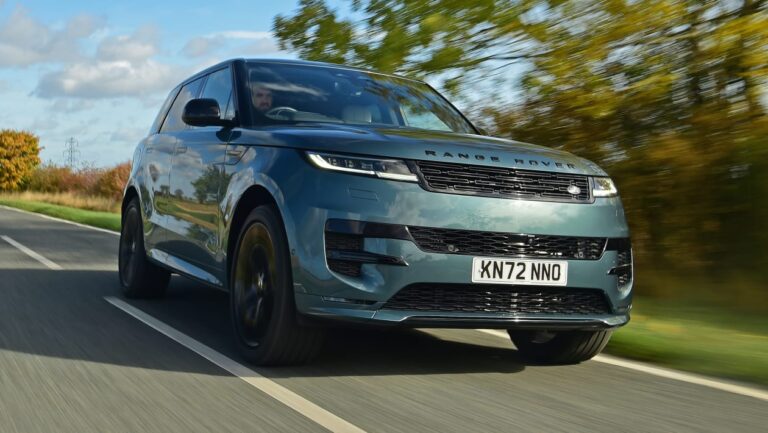The third-generation Range Rover Sport delivers exactly what luxury SUV buyers are looking for. Smarter styling, improved onboard technology, along with a raft of developments in the way the Sport drives mean that it remains as sophisticated as ever, while maintaining a dynamic edge over its bigger Range Rover sibling.
A strong choice of petrol, diesel and efficient plug-in hybrid engines will please private and business users alike, as will the sumptuous levels of comfort and refinement. Yes, prices have inevitably risen, but the Range Rover Sport is one of the best premium SUVs you can buy.
About the Range Rover Sport
In 2001 Land Rover launched its (L322) Range Rover model – a new, more upmarket Rangie that felt like a true luxury car that just happened to be a supreme off-roader, too. The problem was that cunning German manufacturers such as BMW and Porsche were taking advantage of the market Land Rover had left behind; sporting SUVs such as the X5 and Cayenne models were appealing to buyers who wanted a premium 4×4 that was also good to drive.
Land Rover had to respond and did so in 2005 with its Range Rover Sport. Originally based on the heavy underpinnings of its Discovery sibling, the Sport moved onto an all-aluminium body in its second generation and set a high bar for handling prowess and performance – all while keeping up supreme levels of luxury, refinement and, of course, its famed off-road ability.
The latest Sport model, launched in 2022, utilises the same MLA-Flex platform as the all-new Range Rover – architecture which can be used to accommodate all-electric, plug-in hybrid and mild hybrid powertrains.
Up against rivals such as the aforementioned X5 and Cayenne SUVs, along with the Mercedes GLE, Audi Q7 and even the Maserati Levante, the new Range Rover Sport needs to be at the forefront of design and technology to win over buyers. Has it succeeded?
Its minimalist exterior styling and sumptuous cabin certainly set the right tone, while onboard infotainment is the best yet and tech advances such as rear-wheel steering help the Sport’s manoeuvrability and ease of use. A range of mild-hybrid petrol, diesel and plug-in hybrid engines add to its appeal, while an all-electric model is set to be introduced in 2024.
Entry into the Range Rover Sport lineup starts with the 296bhp D300 3.0-litre diesel, followed by the D350 which bumps power up to 345bhp. The P400 3.0-litre petrol model offers a healthy 394bhp, although the more efficient P440e and P510e PHEVs pack more of a punch with 434bhp and 503bhp respectively. The 4.4-litre V8 petrol engine found in the top-of-the-range P530 provides a whopping 523bhp and a 0-62mph sprint time of 4.3 seconds. All models use an eight-speed automatic transmission.
Available trim levels include the SE, Dynamic SE and Autobiography, with a standalone First Edition specification offered in combination with the P530 model. The SE is generously equipped, although for around an extra £3,000 the Dynamic upgrade adds a styling kit, a Satin Dark Grey finish for the alloy wheels and interior chrome accents. The Autobiography is a slightly different proposition as it adds a further £15,000 over a base SE model.
For an alternative review of the Range Rover Sport, visit our sister site carbuyer.co.uk…


